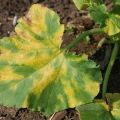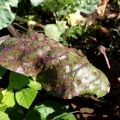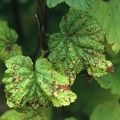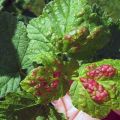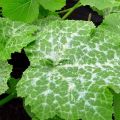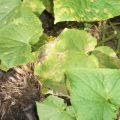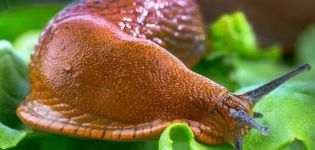What to do if there are yellow spots on the leaves of a pear, the causes of the disease and its treatment
The most dangerous disease for a tree is rust. You must immediately know what to do if there are yellow spots on the leaves of the pear. Previously, the disease was practically unknown, but now this phenomenon is found on almost every tree. If you take action in time, then there are significant chances of recovery. You should also pay attention to nearby growing plants that can be a source of infection.
What it is?
On the affected plant, the leaves are covered with red-orange spots with a yellow rim. The color gradually becomes darker. Then the orange specks deform and swell. Beginning to resemble a tumor. Because of this, the affected plate falls off.
Causes of the disease
The culprit of the disease is a fungus. It attacks the plant in summer and deprives it of half of its harvest. The carrier of the disease is the juniper. It is on it that the infection hibernates. In wet, windy, and most importantly warm weather, the opened spores break off and are transported over long distances. At this moment, the infection of the fruit culture occurs. After a while, changes gradually appear on the foliage.
Red specks are especially noticeable in July. They then transform into "horns" and lead to leaf fall. For the winter, the infection moves back to the juniper.
How does the disease develop?
If, after flowering is complete, the leaves are covered with orange spots, then the culture is sick. In summer, the infection spreads to the petioles. Then, brown or red spots form on the outside, as well as individual dots.

The peak is in autumn. Growths appear that are visible on the inside of the leaves. They are filled with fungal spores, which then dissipate.
The varieties with the lowest immunity
If the leaves are covered with yellow spots, it means that a plant that is not resistant to rust grows on the site. The lowest immunity in varieties:
- Bude Ardanpon;
- Clapp's favorite;
- Dikanka is winter;
- Curé.
When buying, you should not stop your choice on these varieties.

Why rust is dangerous
A diseased plant leaves early leaves. The petioles turn dark, and spots appear on the shoots. As a result, the number of ovaries decreases, which is the reason for the low yield. The fruits begin to fall off before reaching technical maturity.
What else is the danger:
- The culture becomes weak immunity inherent in nature. Therefore, after being damaged by rust, the plant becomes very vulnerable to other diseases and is attacked by pests.
- Reduced immunity is followed by lowering the plant's winter hardiness. Shoots affected by the disease will not withstand the frost. As a result, frost holes and cracks of different sizes will appear on the surface. Hollows form in their place, contributing to the destruction of the tree, since due to damage to the bark, the culture will become unstable to bad weather conditions.
- Rust will reduce the plant's photosynthesis. This will prevent the tree from developing properly and will weaken it. If you do not start treatment immediately, the plant will not be able to survive the frost.
- In a diseased pear, the fruits become small. Therefore, in the presence of rust, there will definitely not be a large harvest. Very often, a tree that has recovered does not bear fruit the next year.
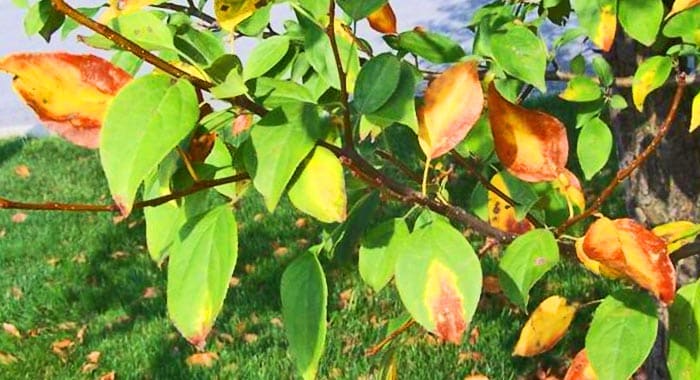
Pear Corrosion Control Methods
It is possible to cure a plant disease in different ways. The main thing is to start fighting in time.
Mechanical struggle
Since the beginning of spring, the plantings are constantly examined. Complex of measures:
- To save the plant, pruning is carried out on time at the beginning of the season. Before the buds bloom, the infected branches are cut off and must be burned. The cut is made at a distance of 13 centimeters from the damaged areas.
- The wound caused by rust on the trunk is cut to healthy wood. Then the site is processed with iron vitriol.
- Cut out nearby juniper stands. Since the formed spores in the pustules of the leaves by the onset of winter tend to fly over to the juniper for further development, on which they will germinate again and overwinter in gelatinous growths. In the spring, they will fly apart again to settle on a pear.
- Planting better rust-resistant varieties.
- Remove fallen leaves, broken and cut branches from under the trunk. You cannot throw them away. The only right decision is to burn it. All shoots that appear under the culture are cut out to avoid the spread of the disease.
- The soil is constantly loosened and weeds are removed, which can be sources of fungal growth.
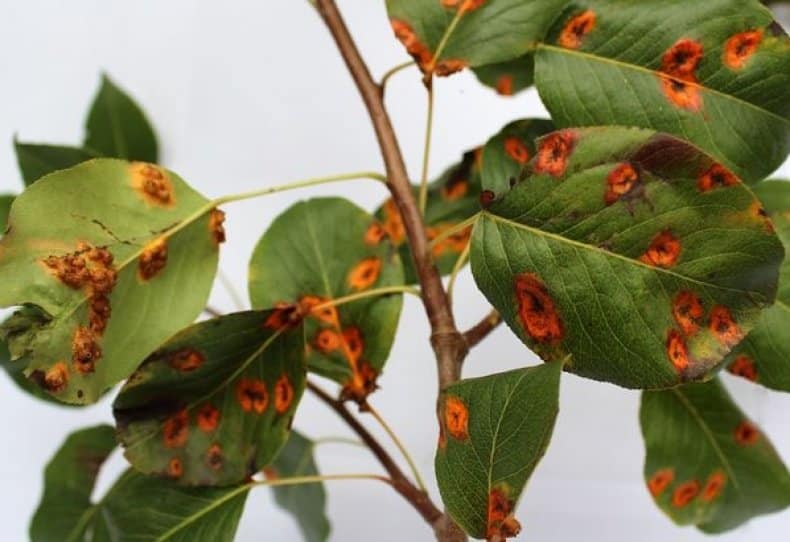
An important rule! The tools used to clean the plant must be disinfected. Otherwise, during the next treatment, the disease will quickly spread to healthy plantings.
If rusty spots are not pronounced, then the culture can be treated with drugs.
Chemicals
For treatment, fungicides are used. It is recommended to spray with colloidal sulfur. The solution should be 0.4%. The affected plant is treated 5 times:
- Before flowering.
- After flowering.
- When the leaves appear.
- When the fruits start to grow.
- When the leaves fall
If you process the plant at the time of flowering, then the fruits will also become infected with rust.
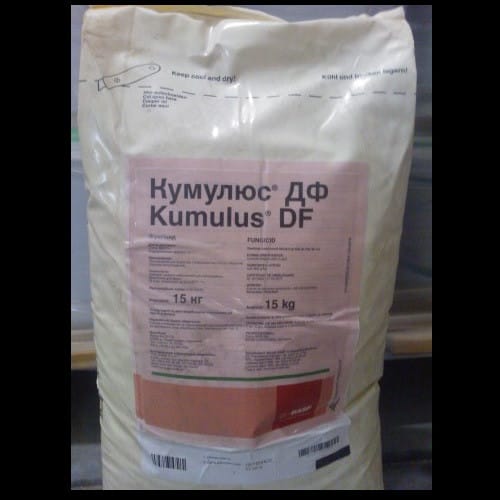
Also, treatment is carried out with the drug:
- "Kumulus DF";
- "Poliram DF".
When fighting yellow-orange spots and dark spots, it is recommended to alternate fungicides, otherwise the fungus will develop immunity.
If the leaves are affected by orange spots and dark spots, it is recommended to treat with the "Iskra" preparation. Its advantages include:
- not toxic to birds and beneficial insects;
- safe for all plants;
- has a beneficial effect on plantings;
- helps to increase yields.
But the drug also has a drawback. It is prohibited for use in areas of fishery reservoirs.
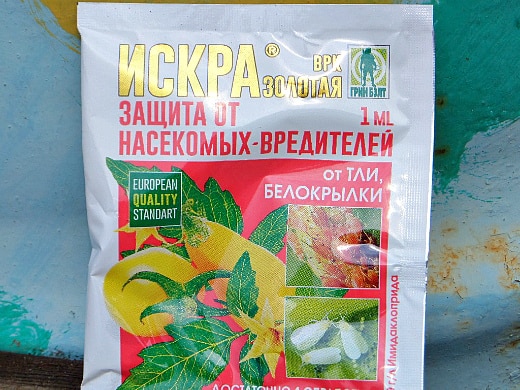
Also in the fight against the disease helps "Strobi". This is a new generation drug. Advantages:
- does not pose a danger to warm-blooded and beneficial insects;
- compatible with many drugs;
- not addictive;
- does not possess phytotoxicity;
- precipitation does not wash off the drug;
- allowed to apply at the time of flowering.
Broad-acting drug - "Green Belt". It helps to fight not only rust, but also spotting, scab. The advantages include:
- pesticide compatibility;
- safety for birds, insects;
- does not harm plants.
The drug is not compatible with most fungicides.
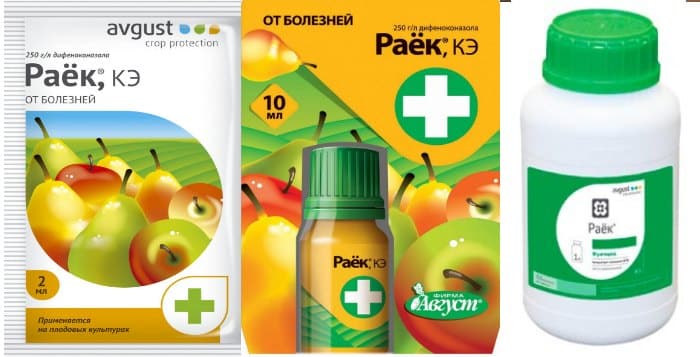
It is worth paying attention to the drug "Raek". It is a systemic fungicide. Advantages:
- not phytotoxic;
- precipitation does not wash off the product;
- compatible with other drugs;
- does not pose a danger to beneficial insects.
Folk remedies
Experienced summer residents carry out the struggle with the help of infusion:
- Ash. An infusion of 500 grams of ash and a bucket of water (10 liters) will help get rid of the disease. The mixture is stirred and left for 2 days.
- Soap and soda. Laundry soda (65 g) is combined with soap flakes (50 g). Pour in water (10 l). Stir and leave for half an hour.
- Mullein. An infusion of two parts of water and one part of slurry helps from rusty spots. Set aside for a couple of weeks. Then poured into the mixture twice as much water as the volume of the infusion, and water the plant. One bucket will be enough for a mature tree.
- Marigold. To do this, collect half a bucket of flowers, which must be fresh. And they fill it with the same volume of water. An important point - warm water is needed. Cover with a lid. They put it in the basement for two days. Then, 50 g of shavings of laundry soap are poured into the strained infusion and mixed.
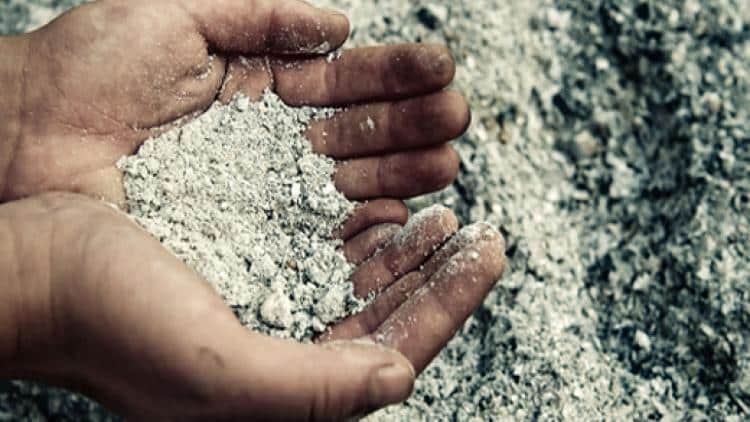
Also, from a pronounced disease, use a decoction of horsetail or a fertilizing shower from a urea solution. The urea solution is very easy to prepare. It is a versatile product that can help fertilize, eliminate pests and fight disease. To do this, 7 liters of ordinary water are taken for 350 g of product. Stir and process before frost.
It is recommended to spray not only the plant, but also the fallen leaves.
Preventive treatment
If the disease was defeated, all nearby juniper stands were cut out and there is no forest nearby, then there is still no guarantee that the rust will not return again. The disease is difficult to eradicate, so you should constantly monitor the condition of the plants for several years after the cure and take preventive measures. Which include:
- cut off in time;
- to cover up newly formed cracks and frost holes;
- feed on time, a healthy plant has much more chances to resist ailments;
- flavored soil, this will help strengthen the immune system and protect against ailments.
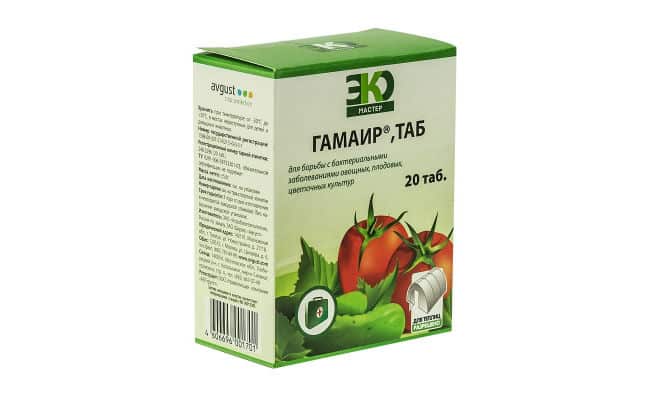
For prevention, treat several times per season with one of the drugs:
- Bordeaux liquid, you need a 3% solution;
- "Horus", 10 liters of water is mixed with 2 grams of the drug;
- "Gamair", you will need 10 g per bucket;
- "Alirin" or "Raekom" are diluted, like the previous remedy.
Tips to follow for tree health:
- The pear is grown far from the juniper.
- Arrange windproof plantings around the garden. This helps to protect the plantings from wind-carried fungal spores. Any plants are suitable as protection, the main thing is that their height is at least half a meter more than a pear.
- If an ornamental juniper grows nearby, they are constantly inspected for spores. Also, this plant is treated prophylactically, like a pear.
If you identify an ailment at the initial stage and immediately apply the necessary measures, then you can get rid of the disease in a year. Do not be afraid that other fruit trees growing nearby will become infected with spores. The disease is transmitted only to juniper.


